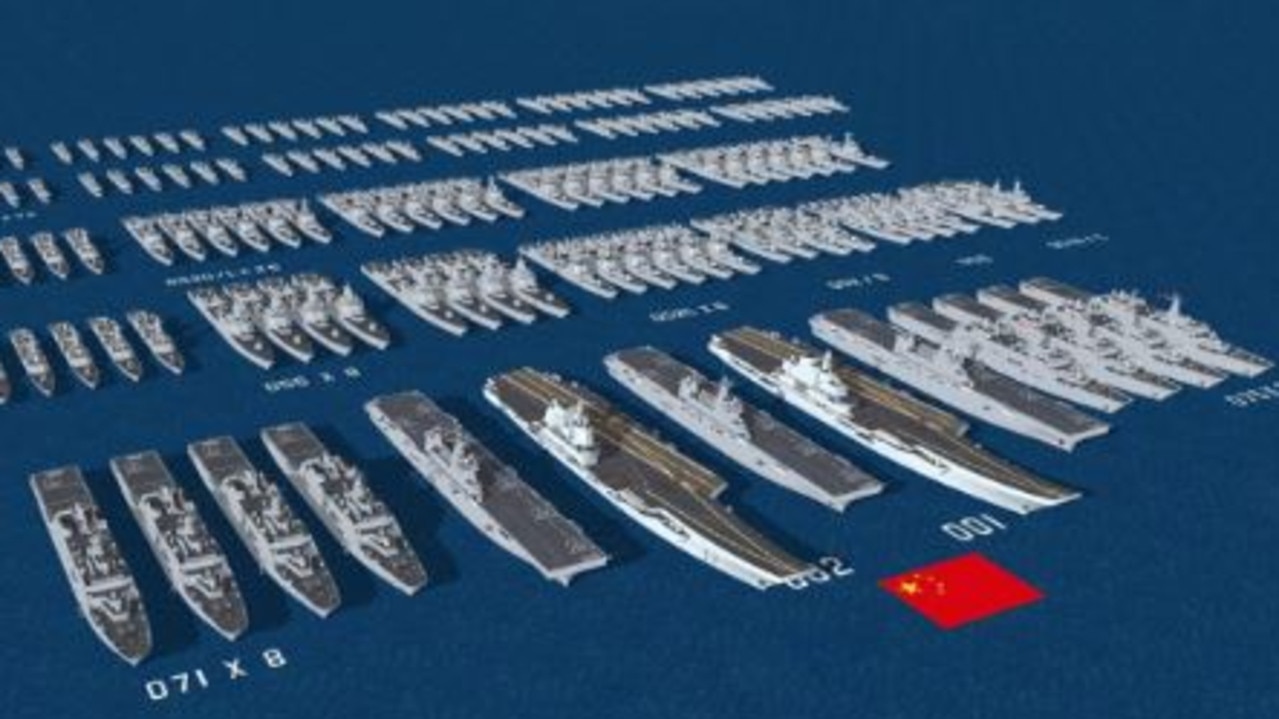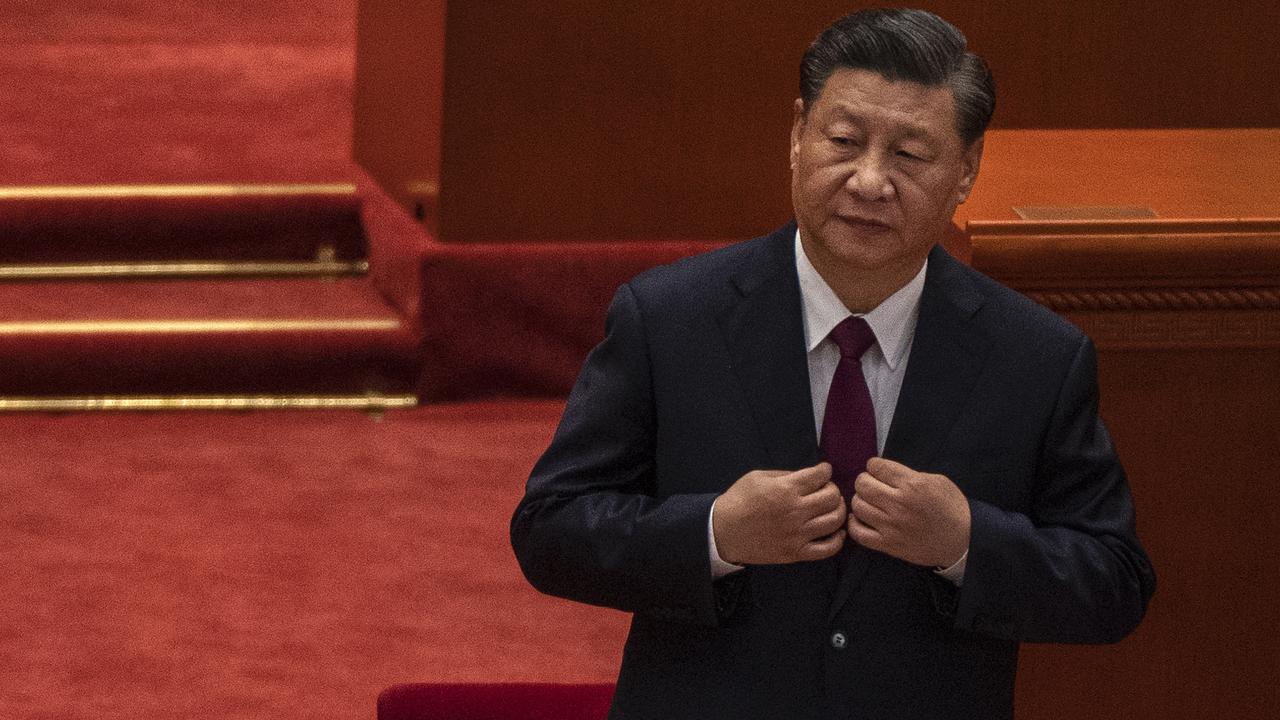China’s push to dominate the Indo-Pacific by 2030
A new report warns that China’s navy could have five aircraft carriers and ten ballistic missile submarines by 2030.

Chairman Xi Jinping’s push to dominate the Indo-Pacific could see five aircraft carriers and ten ballistic missile submarines take to the waters by 2030, a new report warns.
The Center for Strategic and Budgetary Assessment’s (CSBA) study China’s Choices assesses the nation’s economic capacity and political will in an effort to project the outcome of its expansive modernisation drive.
The CSBA anticipates Beijing’s military budget – hidden in a complex network of accounting and secrecy – as capable of growing at roughly 3 per cent above inflation over the next decade.
The think-tank says it used computer-assisted analysis to assess the cost of possible military force structures.
One outcome, where the size of China’s army is cut and the air force discards its older aircraft, projects a People’s Liberation Army (PLA) optimised for seizing Taiwan and projecting power throughout Asia.
“The projection overall indicates that the PLA has the resources necessary to continue its modernisation over the 2020s,” the report warns.
“The PLA can maintain, expand, and improve its regional defence forces, including short-range fighter aircraft, land-based ballistic and cruise missiles, frigates, missile boats, and diesel-electric submarines.
“At the same time, the PLA can continue building a range of large power projection platforms for global operations, including aircraft carriers, cruisers, destroyers, blue water logistics vessels, strategic bombers, and strategic transport and refuelling aircraft.”
Former Admiral Phil Davidson told USNI News that the CSBA projections leave the US Navy ahead of China in just one arena – attack submarines.
Stream more world news live & on demand with Flash. 25+ news channels in 1 place. New to Flash? Try 1 month free. Offer ends October 31, 2022 >


Balance of power
In his book, On Dangerous Grounds, Asia Maritime Transparency Initiative (AMTI) director Gregory Poling argues the point of China’s extraordinary military expansion is to force the United States to admit that it does not have enough firepower to intervene in the South and East China Seas or defend its regional allies – including Australia.
And that will leave the likes of Australia, Japan, and the Philippines out on a diplomatic limb.
It’s a scenario the Chinese Communist Party is keen to exploit.
“China already has overwhelming dominance in missiles, in surface vessels, in combat aircraft, in the electromagnetic spectrum over the South China Sea,” Poling told the Australian Lowy Institute think tank.
“The only advantage the United States might be able to claim is in the undersea domain, and the US is not going to risk its submarine fleet attacking Fiery Cross Reef if there is a contingency over Taiwan. The islands China built in the South China Sea have fundamentally upended the military status quo in ways that I think we are still slow to admit.”
If a shooting war erupts, “every surface vessel that the US has in the South China Sea will steam as fast as it can … to get out of range”.
And that means the bullied nations of Southeast and Northeast Asia must band together with the likes of Australia, Japan and India to impose a different kind of cost on Chairman Xi’s behaviour.
“Eventually, there will have to be economic cost imposition to convince individual entities in China that the South China Sea is not a great place to make money, and therefore they should back off on things like militia behaviour,” Poling explains.
“A lot of that, for now, has to come indirectly through public naming and shaming campaigns that limit the ability of these companies to operate abroad.”
Retired Australian rear admiral James Goldrick argues Australia “must be there for the long haul”.
“It needs to assert its independent national interests and its national presence in the region,” he writes.
“On the other hand, Australia must work not only with the United States but, and this will be increasingly important, its regional (and extra-regional) partners to minimise its and their vulnerabilities and maximise the pressure on China.”
And that’s a matter of preparing for worst-case scenarios.
“The need for cover – that is, to have forces of sufficient capability and/or in reasonable proximity to deter aggressive actions – is a key consideration,” he states.
Through a glass darkly
China won’t have everything its way, the CSBA concedes. “There are certain areas where defence industrial base constraints are difficult to shift even in a five- or ten-year period, such as in submarine production,” the report explains.
This is because of the highly complex nature of the vessels and the specialist infrastructure needed to assemble and support them.
But a focus on diesel-electric attack submarines could suit China’s specific situation. Littoral (shallow, near-land waters) “generally limit maneuverability, speed and the use of weapons and sensors by one’s surface ships and submarines, primarily designed for employment on the open ocean”.
Admiral Davidson, former commander of USN forces in the Indo-Pacific, says the West’s advantage in attack submarines must be capitalised upon. Only then can China’s powerful new navy be put at risk wherever it may sail.
Then there’s the matter of economic uncertainty.
“Although our analysis indicates that this force structure projection is plausible, small changes in certain factors, such as the PLA’s annual budget growth rate and the inflation rate, can substantially expand or constrain the PLA’s resources for modernisation, especially in the out years,” CSBA adds.
Whatever the outcome, China’s military might is set only to increase.
“Perhaps our requirement can best be described by paraphrasing Theodore Roosevelt,” argues rear admiral Goldrick. “Australia needs to speak carefully and carry a big enough stick.”
That’s not just a matter of owning adequate firepower, he adds. It’s also one of consistent and robust diplomatic messaging, engagement with regional nations and outspoken resistance to attempts at coercion.
“The South China Sea is as much a contest of information and ideas as a cockpit of at-sea and in-the-air encounters,” Goldrick concludes.
Jamie Seidel is a freelance writer | @JamieSeidel






